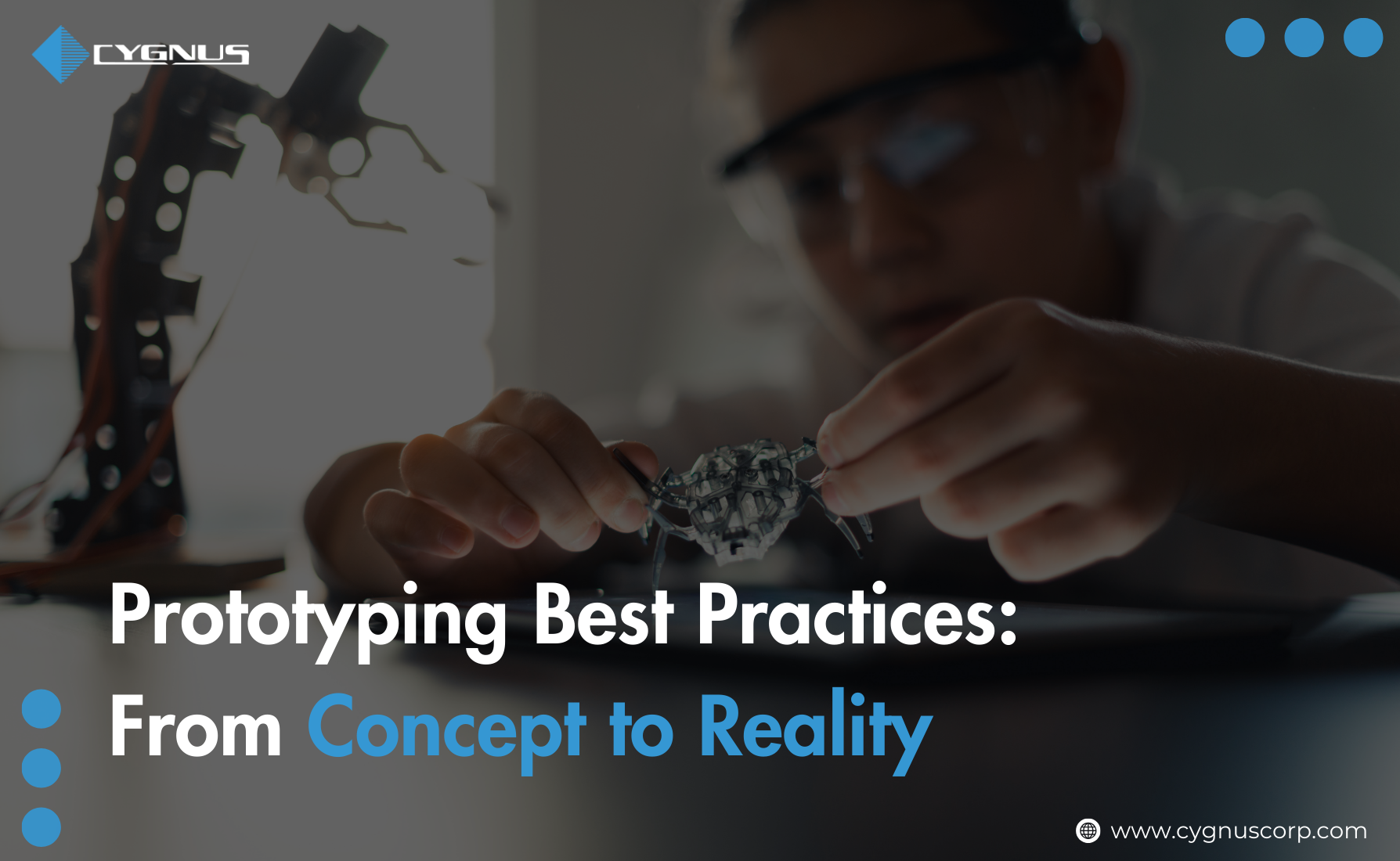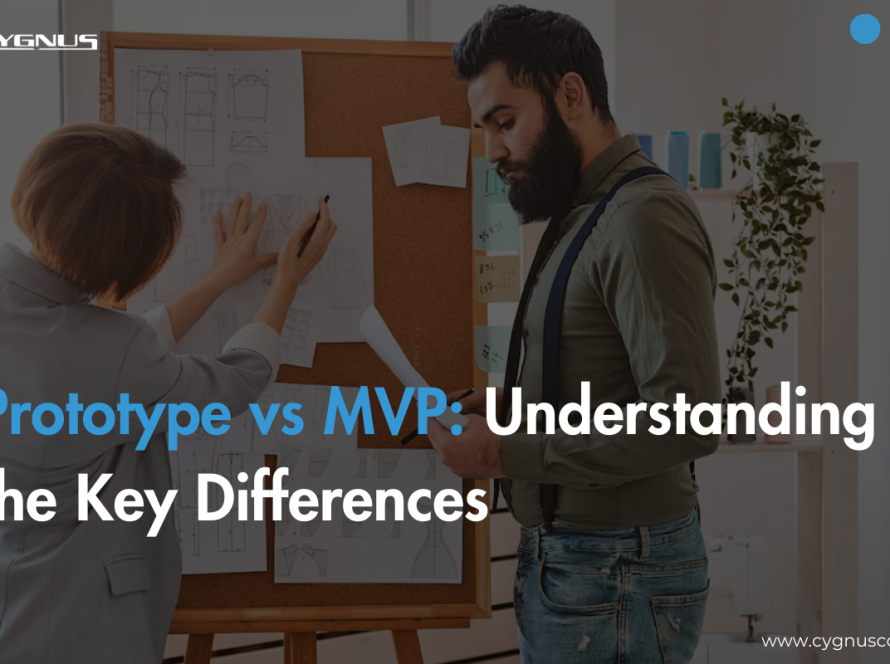Welcome to the world of prototyping, where ideas transform into tangible solutions. In this blog, we’ll get into the best practices of prototyping, providing you with expert tips to refine your product development process.
Whether you’re a seasoned inventor or a curious newcomer, mastering these practices is key to turning your conceptual sketches into functional prototypes. Join us as we explore the crucial steps, from selecting the right materials to understanding user feedback, ensuring your prototype not only meets expectations but exceeds them. Get ready to bring your visions to life with confidence and precision.
Understanding Prototyping:
Prototyping is all about creating a simple model of your product to see how it works before making the final version. This process helps you test ideas quickly and cheaply. By following prototyping best practiceshttps://cygnuscorp.com/prototyping/prototype-vs-mvp-understanding-the-key-differences/, you can avoid common mistakes and make your prototype as effective as possible. Experts often share tips on product prototyping to help you get the best results.
One important concept in prototyping is creating a Minimum Viable Product (MVP). This is a basic version of your product with just enough features to satisfy early users and provide feedback for future improvements. By focusing on the MVP, you can ensure your prototyping process is efficient and targeted.
Phase 1: Planning Your Prototype:
In this first phase, you decide what your Minimum Viable Product (MVP) should be. This means figuring out the most basic version of your product that you can test with users. It’s all about planning what features are necessary to make the prototype workable and setting clear goals. Understanding the difference between proof of concept vs prototype is crucial here; a proof of concept is used to validate the idea itself, while a prototype tests how the idea will be used.
Phase 2: Designing the Prototype:
Now, you sketch out how your prototype will look and function. This design phase involves creating detailed drawings or digital renderings of your product. It’s important to keep the design focused on the MVP, making sure it’s simple yet effective enough to give real insights into how the final product will work. Again, keeping the proof of concept vs prototype distinction in mind helps ensure the design is aligned with what needs to be tested.
Phase 3: Building the Prototype:
This is where you bring your designs to life by creating the actual prototype. It’s crucial to follow prototyping best practices during this phase to avoid unnecessary complexities and to ensure the prototype can be adjusted based on feedback. This stage may involve using different materials and methods to see what works best for your product.
Phase 4: Testing and Iteration:
After building, you test the prototype. This involves real users interacting with your product and providing feedback. The key here is to learn what works and what doesn’t, which is one of the major benefits of using prototypes. You’ll likely go through several rounds of testing and tweaking, or iterations, to gradually refine your prototype based on user input and technical assessments.
Phase 5: From Prototype to Product:
The final phase involves turning your refined prototype into a ready-to-market product. By this stage, your MVP should be well-defined and thoroughly tested. This phase is all about finalizing designs, choosing the right materials, and planning for mass production. The insights gained from the previous phases help ensure that the final product meets user needs and market demands.
Expert Tips of Product Prototyping:
| Tip | Description |
| Start with a Clear Objective | Define what you want to achieve with your prototype. This helps focus your efforts and resources effectively. |
| Simplify Your Design | Begin with the simplest version of your product that can provide the core functionality or test your concept. |
| Iterate Quickly | Make and test changes rapidly. Quick iterations allow you to learn and improve the product faster. |
| Use the Right Tools | Choose prototyping tools that match the complexity and type of your product, such as CAD software or 3D printers. |
| Gather User Feedback | Collect and integrate feedback from potential users early and often to ensure the product meets their needs. |
| Document Everything | Keep detailed records of your prototyping process, including what was tested, results, and changes made. |
| Embrace Failures | Use failures as learning opportunities to refine your prototype and improve the final product. |
| Balance Cost and Quality | Be mindful of your budget but consider investing in higher-quality materials or methods when necessary. |
Future of Prototyping:
The future of prototyping is shaping up to be an exciting realm with significant advancements in technology and processes. Key trends forecasted for the upcoming years include the increased use of 3D printing, the integration of artificial intelligence (AI), and the adoption of sustainable materials and practices.
3D Printing Evolution: This technology continues to revolutionize prototyping by allowing faster, more cost-effective creation of intricate, multi-material prototypes. Innovations such as high-speed 3D printing and metal 3D printing are making it possible to produce prototypes with enhanced precision and durability, reducing the time and cost involved in the prototyping process.
AI and Automation: The integration of AI in prototyping is expected to automate and streamline many aspects of the prototyping process. From design and testing to post-processing, AI can speed up development cycles, improve accuracy, and reduce costs. This helps in creating more refined products faster and more efficiently than ever before.
Sustainable Prototyping: There’s a growing trend towards using eco-friendly materials and processes in prototyping. The industry is moving away from traditional practices that are harmful to the environment, embracing materials that are biodegradable and technologies that minimize waste. This shift not only helps in reducing the environmental footprint but also aligns with global sustainability goals.
Advanced Materials: The development of specialized materials tailored for specific applications continues to progress. These materials, ranging from biocompatible resins for medical uses to high-strength polymers for aerospace, offer properties that enhance the functionality and durability of prototypes.
Interactive and Collaborative Prototyping: Technologies like AR (Augmented Reality) and VR (Virtual Reality) are becoming integral in prototyping for enhancing visualization and collaboration. These technologies allow designers to interact with their prototypes in real-time, making modifications more efficiently and enhancing the overall design process.
By adhering to prototyping best practices and focusing on creating a minimum viable product (MVP), businesses can leverage these advancements to maximize the benefits of using prototypes. These benefits include reduced development time, cost savings, and the ability to test and refine products more effectively before full-scale production.
Conclusion:
Following prototyping best practices helps turn your ideas into real, usable products efficiently. By aiming for a Minimum Viable Product (MVP), you can quickly see what works and what doesn’t, and make necessary adjustments before finalizing your product.
Knowing how to make a prototype of a product simplifies the development process, saves time, and improves your product’s quality through user feedback. As prototyping technologies evolve, keeping up with these practices will be crucial in making your ideas successful and market-ready.
FAQS
What is the most effective type of prototyping for software development?
Rapid prototyping is often considered the most effective for software development, as it allows for quick iterations and immediate feedback from users, streamlining the development process.
How often should prototypes be iterated upon before finalizing the product?
Prototypes should be iterated upon as often as necessary to meet user needs and functionality requirements, typically undergoing multiple iterations based on user feedback and testing results.
Can prototyping reduce the overall development time for a product?
Yes, prototyping can significantly reduce the overall development time by identifying and addressing issues early in the development process, which helps in avoiding costly changes later on.
What are the essential tools needed for effective prototyping?
Essential tools for effective prototyping include 3D modeling software, CAD tools for precision, prototyping platforms like Sketch or Figma for software, and physical prototyping tools like 3D printers for tangible products.




